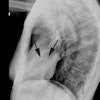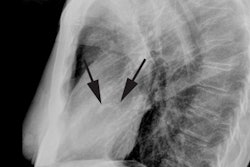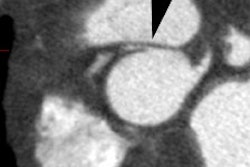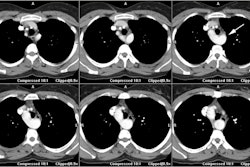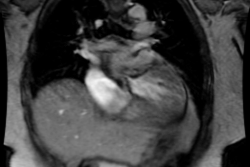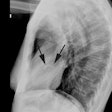Radiology 2001 Dec;221(3):683-8
Coronary Arteries: Retrospectively ECG-gated Multi-Detector Row CT
Angiography with Selective Optimization of the Image Reconstruction Window.
Kopp AF, Schroeder S, Kuettner A, Heuschmid M, Georg C, Ohnesorge B, Kuzo R,
Claussen CD.
PURPOSE: To investigate how the technique of retrospective gating can be used to
optimize reconstruction of multi-detector row computed tomographic (CT) images
for each of the three major coronary arteries during the cardiac cycle.
MATERIALS AND METHODS: Multi-detector row coronary CT angiograms obtained in 50
patients were reconstructed at 20%-80% of the cardiac cycle in increments of
10%. Two blinded independent reviewers assessed the image quality, in terms of
artifacts and visibility, obtained with three-dimensional postprocessing for
segments 1-3 (right coronary artery), segments 5-8 (left main and left anterior
descending coronary arteries), and segments 11 and 12 (left circumflex artery).
The following grades were assigned: 1, very poor; 2, poor; 3, fair; 4, good; and
5, excellent. RESULTS: The left anterior descending artery was best visualized
in middiastole at 60%-70% of the cardiac cycle, and the left circumflex artery
was best visualized at 50%. The optimal reconstruction window for the right
coronary artery was significantly different at 40% (P <.05). Although there
was good agreement (kappa = 0.75) between the two reviewers, there was a high
degree of variation in the patient population. CONCLUSION: The image
reconstruction window for CT angiography of the coronary arteries should be
adapted to each coronary artery. The use of one fixed time point in the cardiac
cycle for image reconstruction does not provide optimal image quality.
